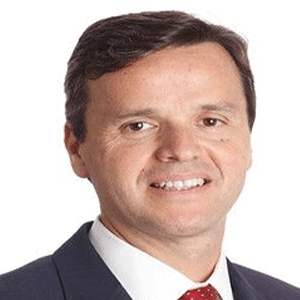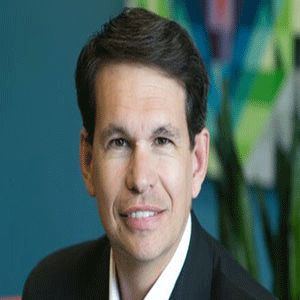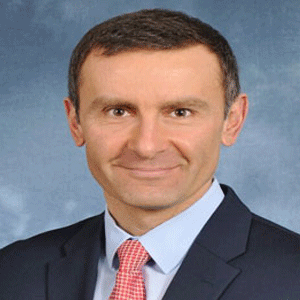THANK YOU FOR SUBSCRIBING

Modernizing the IT landscape : A Vital Long-term Challenge for Global Companies
Pablo Ciano, CIO, DHL Express Americas


Pablo Ciano, CIO, DHL Express Americas
An important task at global companies like DHL Express, a key business unit of Deutsche Post DHL, is the modernization of the organization’s IT landscape – migrating from legacy silo applications to a service-oriented architecture.
It is a vital transformation, but its magnitude and complexities are not fully appreciated for those outside of the IT function.
This is a significant undertaking in terms of time and personnel for a large international enterprise since it not only involves information systems but also aligning the underlying processes. Like other large firms, over time we absorbed many different companies with different systems, while our own units in different countries developed their own systems.
We have been working on converging all those systems (and processes) to the global standards while also building an entirely new platform in IT–the ESB (Enterprise Service Bus)–through which all these services connect. This new platform will allow us to move to a true SOA (Service Oriented Architecture) with more functionalities, reusability and agility for bringing new capabilities to the business.
“There is a significant shift from apps to services and a major transformation from a small scale to a large international enterprise”
Moving a company from apps to services is a major effort from the IT perspective, but it brings significant benefits. Tracking, for example, is one of the key services for internal and external clients. Used by at least ten different clients in different departments, tracking was developed for internal operations and for customers, and having one single global Tracking service will allow us to have a single globally reusable standard; easier to maintain and modify.
In my previous position at DHL Express, as CIO for the U.S., I executed a convergence program that led to decommissioning 300 applications and migrating to global standards. We also developed and implemented new capabilities like Paperless Trade, Advance Notification Services and Denied Party Screening Workflow.
I took over in 2012 as CIO for DHL Express Americas, which covers 55 countries and territories, including U.S., Canada, Latin America and the Caribbean. So far we’ve sunsetted more than 4,000 silo apps globally and migrated most of them to services. To give you an idea of the enormous scope of all this, we’ve been working on the overall migration project for more than four years, and we still have two to three years to go.
Big Data
Big Data has been a favorite “new” topic for the media recently. But in reality, we’ve been processing and manipulating Big Data at DHL Express for many years, long before it was a popular term.
We move millions of packages every day over thousands of routes
Recently, though, we have been using all this data a little differently for predictive analytic projects. For example, we look at performance data to identify which customers are at risk of leaving the company. This way, we can make adjustment in route performance ahead of time.
Also, for a major customer–like a leading hi-tech company with stores all over the world we use our Big Data capacity to gather and disseminate vital information. Supply chains have been shortened and goods that formerly went to distribution centers are now being shipped directly to stores requiring much more frequent and precise data that goes with the package.
Our scans and check point data tell stores when a shipment of new products has been picked up in China and where it is now. This allows the retailers to decide when they can commit to customers. One big customer wants all its stores to have access to check points within minutes of the event taking place, and we can do this.
Another trend which continues to add complexity to supply chains is that companies are outsourcing more and more the manufacturing of their products to a diverse set of OEMs (Original Equipment Manufacturers) which means that DHL needs to integrate with these manufacturers fast and with different IT standards. This requires flexibility and agility like we have not seen before. For instance, when a client launches a new product and needs to integrate output at 10 factories in China, we can help accelerate that integration so the different plants can ship quickly according to our standards, build the final product and reach markets on schedule.
“There is a significant shift from apps to services and a major transformation from a small scale to a large international enterprise”
The Cloud
Another currently popular topic– cloud computing–has been part of DHL Express’ strategic toolkit for years.
We have been using private clouds for over 15 years, and could do that because of the scale of our company. Currently, we have our own data centers in Europe, Asia and North America.
Cloud has become popular recently for SMEs which can now rely on flexible and agile computing capacity; we have been doing that for a while.
Security and Hacking
Different to other industries, Logistics has been considered as an area exposed to terrorist attacks or used for perpetrating terrorist attacks. Good example of that was in 2010, when terrorists in Yemen used international express services to carry plastic explosives hidden in toner cartridges. The packages, though, were intercepted and disarmed before they could be placed on planes.
We need to be extremely disciplined with anything that has to do with IT security. Like any other large company, we are very vigilant against viruses and cyber attacks and run a very secure IT operation.
The challenge of e-commerce
With the growth of e commerce the logistics needs and landscape has changed; what was before a b2b move now is a b2c or c2c one.
The Amazons of the world are changing the logistics landscape, and that is a challenging situation. We need to use technology to revamp our entire online presence to provide better capability for our customers (product suppliers) and their customers – the end consumers.
We need to offer more flexibility and delivery options to the receivers while improving productivity for the company. This is the future for express services. And we are preparing for that future.
Pablo Ciano was appointed CIO for DHL Express Americas and a member of the DHL Global IT Executive Committee in 2012. The Americas division has15,000 employees and serves more than 300,000 customers in 55 countries and territories, including the United States, Canada, Latin America and the Caribbean. Prior to holding his current position, he was named CIO for DHL Express in the United States in 2010. During his tenure, his organization was selected as one of the Top 100 IT places to work. Before that, he was Chief of Staff for the CEO of DHL Express during the restructuring of U.S. operations and was instrumental in the planning and execution of the company’s turnaround. In addition, he led Customer Service and Telesales functions to record levels of performance and productivity. A native of Argentina, Mr. Ciano earned an MBA degree from the University of Virginia’s Darden School of Business.
Weekly Brief
I agree We use cookies on this website to enhance your user experience. By clicking any link on this page you are giving your consent for us to set cookies. More info
Read Also
Artificial Intelligence - Myths And Truths
Sustainable Future through Innovative Technology Solutions
The Future Relies on Augmented AI
Digitalization with the use of digital technologies/Improving business through digital technologies
How Marco's Pizza Leaned On Technology To Succeed Amid The Pandemic By Quickly Pivoting To Contact-Free Delivery And Curbside Carryout
Bunnings Diy Digital Transformation
For a Smarter City: Trust the Data, Ignore the Hype
Smart Community Innovation for the Post Pandemic





















